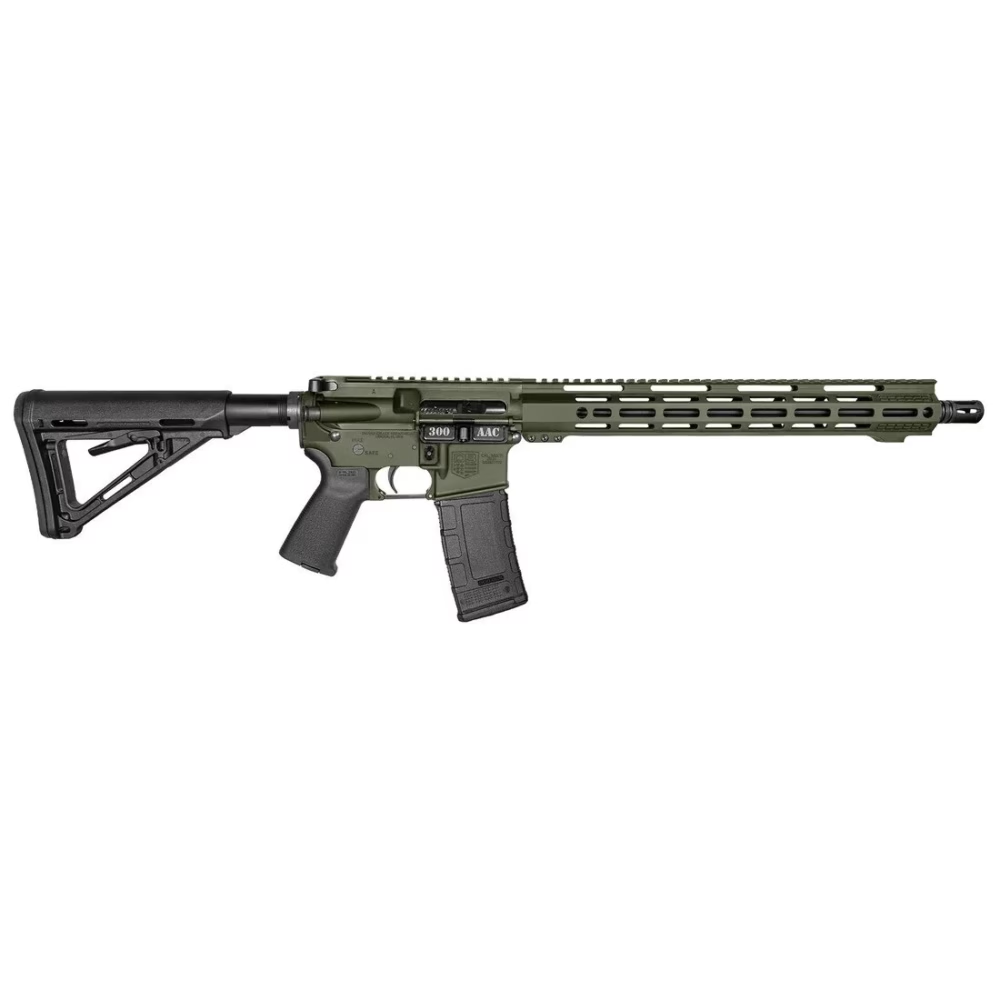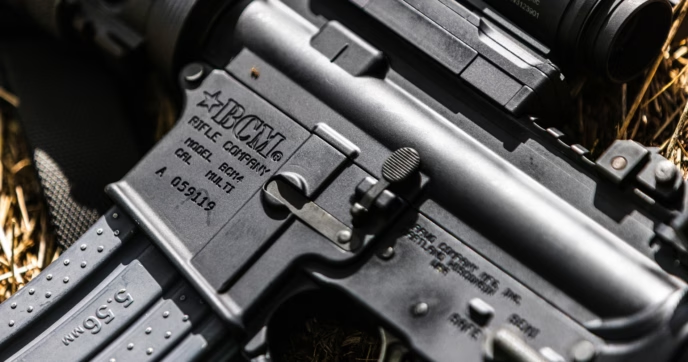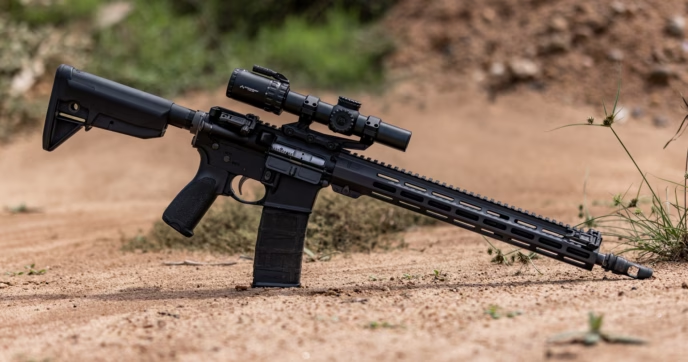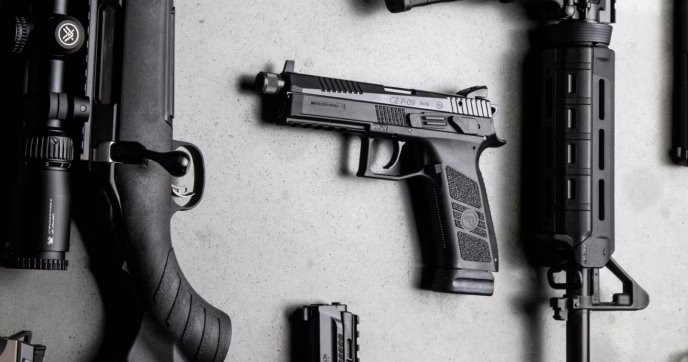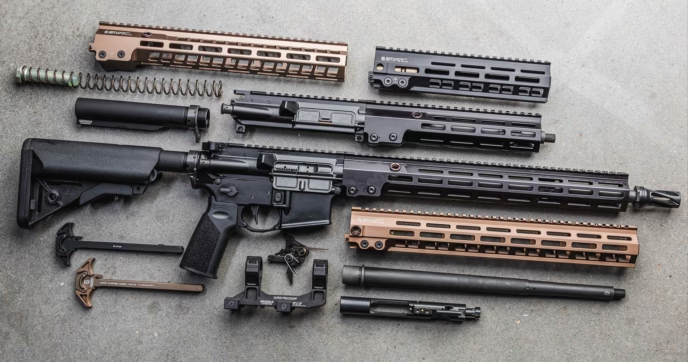When it comes to intermediate cartridges designed for the AR platform, 5.56 NATO typically reigns as the most common and popular caliber. However, while effective enough to become the standard cartridge for the platform, it isn’t always the best choice for every application. For such scenarios that require the use of compact rifles with short barrels and optimal suppressibility, cartridges like .300 Blackout stand tall.
Since its introduction, .300 Blackout has become one of the most popular calibers for the AR-15 as well as other similar platforms. Known for its incredible close-range performance and suppressibility, it has garnered a significant reputation by both civilian enthusiasts and professionals alike. Yet despite its notoriety, there’s a lot to uncover—especially for those new to the caliber. Follow along as we break down what exactly .300 Blackout is, how it performs, and how it’s best used.
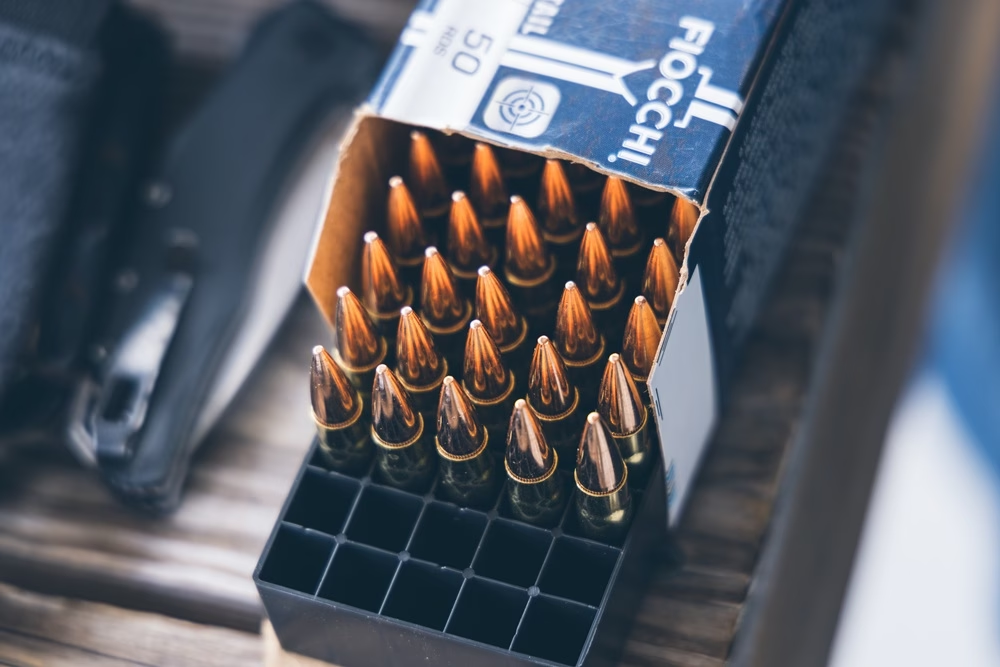
What is .300 Blackout?
.300 Blackout is a specialized cartridge developed by AAC in collaboration with Remington Arms as an alternative to 5.56 NATO that was first rolled out in 2011.
At the time of its introduction, 5.56 NATO was the standard issue cartridge for most applications, but as mentioned above, it was particularly limited in CQB scenarios. Prior to its creation, 5.56 rifles like the MK18 with its shorter 10.3-inch barrel was—and still is—used to great effect. However, once you add a suppressor and other gear onto the rifle, it wouldn’t be as agile—and any barrel length shorter than 10 inches would greatly compromise 5.56 NATO’s capabilities. Even further, with 5.56 being such a high-pressure round with a high velocity, it still produces a loud enough sound signature to permanently damage your hearing when shooting suppressed.
Enter .300 Blackout, a cartridge designed to make up for 5.56 NATO’s shortcomings in CQB applications, while still being compatible with most of the AR platform’s components. Using a .30 caliber projectile, it’s capable of reaching its effective velocity much quicker, allowing it to be fired out of shorter barrels without suffering a significant loss in ballistic performance. It’s far easier to suppress as well. Compared to 5.56 NATO, .300 Blackout produces much lower chamber pressures as well as a slower projectile velocity when fired—making it far quieter when shot suppressed with sub-sonic ammunition.
Why is it called .300 Blackout?
Newcomers to the cartridge often ask: “why is it called .300 Blackout”? There are multiple reasons the cartridge got its name. For starters .300 Blackout was adapted from the .300 Whisper cartridge designed by SSK Industries. .300 Whisper is a trademarked name, so AAC needed to come up with their own so as not to infringe on SSK Industries’ cartridge name. To distinguish their new cartridge, AAC chose the name ‘Blackout’ as a nod to its suppressibility, and to provide a unique name to improve its branding.
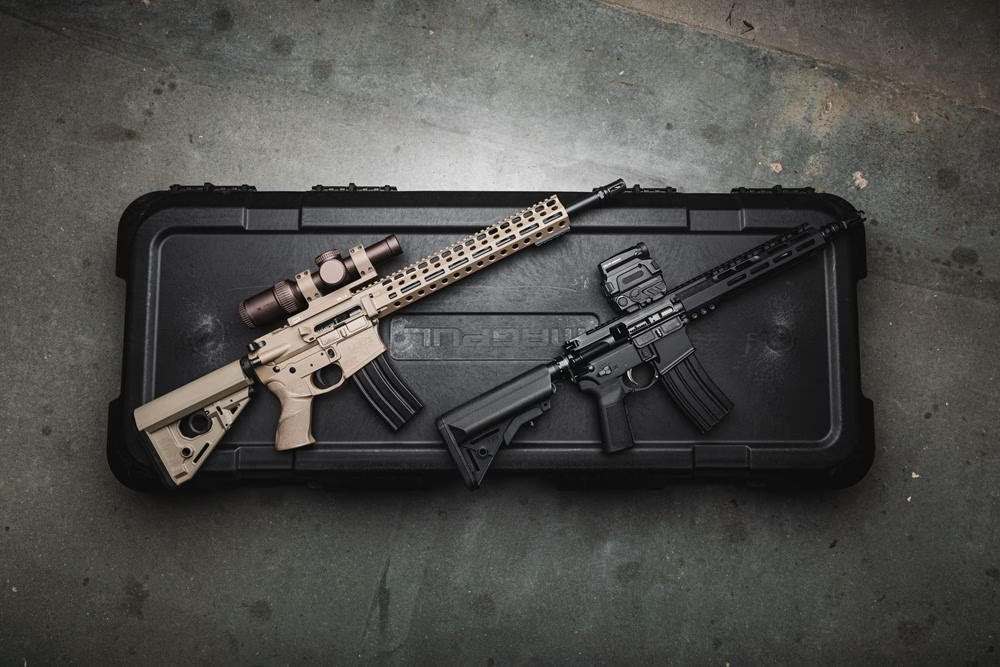
How does .300 Blackout Compare to 5.56?
Being one of the primary alternative calibers to 5.56 NATO, it’s crucial to understand how exactly they compare to one another. We cover this topic at length in our guide on 5.56 vs. .300 Blackout, but below is a summary to get you up to speed on how they perform.
5.56 Characteristics
To start, 5.56 NATO is a high-pressure cartridge that uses a .22 caliber projectile. By design, it’s capable of reaching velocities of around 3,000 FPS (feet per second), with standard ammunition having an effective range of around 500 yards—though specialized loads like Mk 262 are effective out to 750+ yards, given the right setup. Because of its innate characteristics, 5.56 NATO is optimized for use out of longer barrels, with 14.5- and 16-inch barrels being among the most common on civilian rifles. It’s important to note that 5.56 can be effective out of shorter barrels, but a 10-inch one is the shortest practical option for the cartridge.
Overall, 5.56 is a solid general-purpose cartridge. It’s used widely for everything from simple recreation and hunting to more intensive competitive and duty use. Still, 5.56 is extremely limited in terms of its minimum barrel length. As we mentioned, using anything shorter than a 10-inch barrel greatly compromises the round’s ballistic performance, and its high pressure and velocity makes it difficult to suppress. This isn’t to say that you can’t use a suppressor with 5.56 rifles; it’s just that it doesn’t suppress all that well compared to other calibers, with it still being loud enough to permanently damage your hearing if you aren’t wearing ear pro. Additionally, while there is sub-sonic 5.56 ammo available, it’s primarily designed for bolt-actions, and won’t cycle out of an AR.
.300 Blackout Characteristics
Designed for close range engagements and suppressed shooting, .300 Blackout uses much heavier .30 caliber projectiles, produces a lower chamber pressure, and can deliver a substantial amount of energy on target, despite its lower velocity of around 2,000 FPS. Being a heavier and slower cartridge, it doesn’t have the same ranged performance as 5.56 NATO, with it having an effective range of around 300 to 350+ yards. Past these distances, you’ll see a substantial amount of bullet drop.
However, it’s important to recognize that long-range use isn’t what .300 Blackout was designed for. Like we said above, .300 Blackout doesn’t need a long barrel to reach its effective velocity, making it a highly capable PDW caliber. While 5.56 NATO isn’t truly feasible out a barrel less than 10 inches in length, .300 Blackout is optimized for 7.5- to 8-inch barrels, and is still exceptionally adept out of shorter ones too. Plus, its lower chamber pressure and velocity makes it far easier to suppress to a hearing safe level, especially when using a dedicated .300 Blackout suppressor. As such, there’s an assortment of dedicated sub-sonic .300 Blackout loads available from various manufacturers, and they can reliably cycle out of semi-auto platforms with no issues.
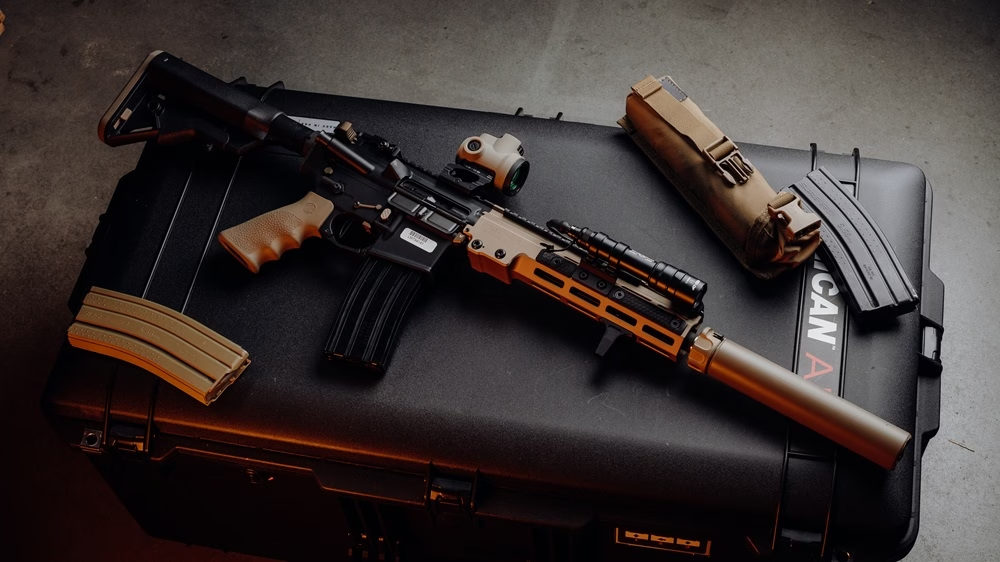
.300 Blackout AR-15s
One of the driving forces of .300 Blackout’s popularity is its compatibility with the AR-15 platform. The AR-15 is easily one of the most adaptable rifles on the market, capable of being configured to chamber multiple calibers. Meaning switching calibers is as easy as swapping over to a .300 Blackout upper.
The differences in construction for 5.56 and .300 Blackout ARs are quite minimal, as the barrel is essentially the only component that needs to be replaced. .300 Blackout casings share the same base diameter as 5.56 NATO, making it compatible with mil-spec BCGs, and even standard AR-15 magazine options too. The gas block and gas tube are also the same, though, .300 Blackout ARs run best with a shorter, pistol length gas system.
Plus, with the AR-15 being as popular as it is, there are a myriad of manufacturers producing parts and components that accommodate .300 Blackout. Everything from .300 Blackout barrel assemblies to dedicated .300 Blackout magazine options are available from several brands, allowing you to tailor your rifle to best suit your own personal needs and preferences.
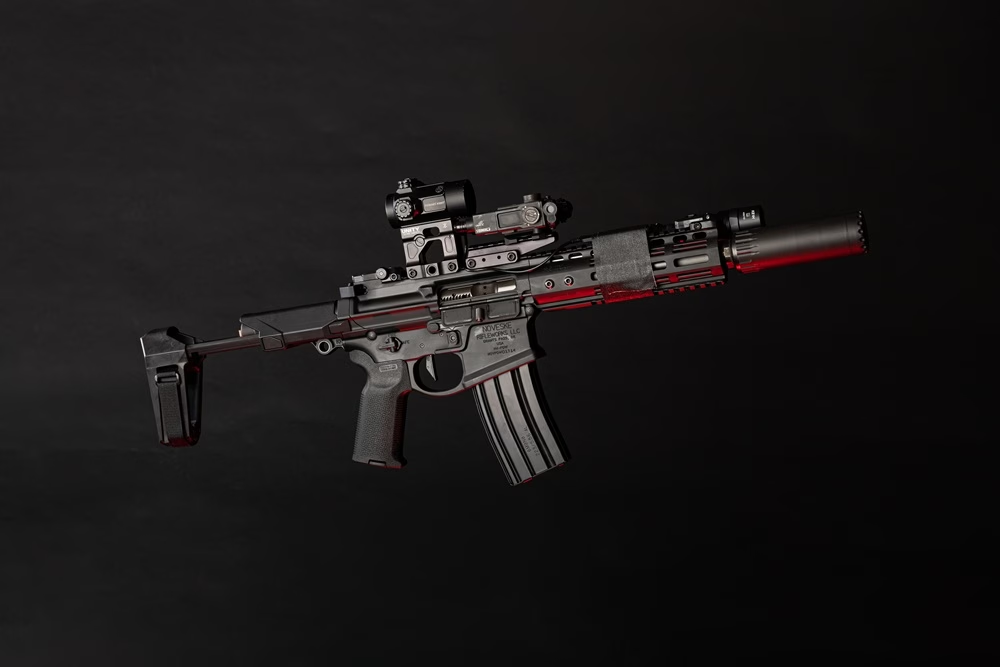
Practical Applications for .300 Blackout
Defense
As it was originally designed, .300 Blackout is an excellent caliber for defensive applications, with it being particularly well-suited for CQB applications. .300 Blackout AR platform rifles can be incredibly compact, with options like the Maxim Defense PDX-SD having an overall length of only 23.75 inches. Other platforms can be even more compact, with models like the MCX Rattler and other select piston-operated rifles coming with folding stocks for an extra modicum of mobility.
Because of their compact form-factor, .300 Blackout rifles can be made to be much more maneuverable than their 5.56 counterparts, allowing you to easily get around corners or other confined spaces. Plus, in a home-defense scenario, you likely won’t even be thinking about ear protection, so the fact that .300 Blackout can suppress down to a hearing safe level makes them a solid choice to consider.
Hunting
.300 Blackout is also an effective hunting caliber for small and medium size game. While you won’t be making any shots at long distances, within 150 yards, it performs incredibly well, carrying enough energy to humanely take down animals like wild hogs, coyotes, and more. Also, there is a plethora of ammo manufacturers producing dedicated .300 Blackout hunting loads as well, giving you different options for different types of game.
Plus, if you’re hunting at night, you can easily pair your rifle with thermal optics, or higher optic mounts to more easily use Night Optical Devices, or NODs.
Recreational and Competitive Shooting
Lastly, .300 Blackout is a solid choice for flat range training, and competitive shooting disciplines, with it being widely used in both CQB and carbine courses. However, if you plan to use .300 Blackout for such applications, the cost of ammo is a notable consideration.
While ammo prices can fluctuate over time, your standard FMJ target ammunition typically hovers around roughly $0.40 per round, with dedicated subsonic or other specialized rounds costing upwards of $0.80 to a $1.00+ per round. While this isn’t necessarily a problem when buying a few boxes for an afternoon range trip, many competitions require you to have at least 1,000 rounds in some instances, meaning the cost of ammo can add up quickly. In the same vein, not every competition allows the use of .300 Blackout, so it’s imperative to ensure that you can actually use it before stocking up on ammo.
Conclusion
Although cartridges like 5.56 NATO remain the standard intermediate cartridge for most carbines, .300 Blackout has proven itself as one of the top alternatives for enthusiasts looking for more close-range stopping power and suppressibility.
Offering exceptional versatility for close-range engagements, it can be used in incredibly compact rifle builds, making it the go-to choice for many defensive and competitive applications, while it’s innate characteristics also make it a solid pick for hunting as well.
Overall, .300 Blackout is an incredibly well-rounded cartridge. So, whether you’re wanting to build a dedicated CQB setup, an easily suppressed hunting build, or simply want a rifle chambered in something other than 5.56 NATO, .300 Blackout is a highly capable possibility.
